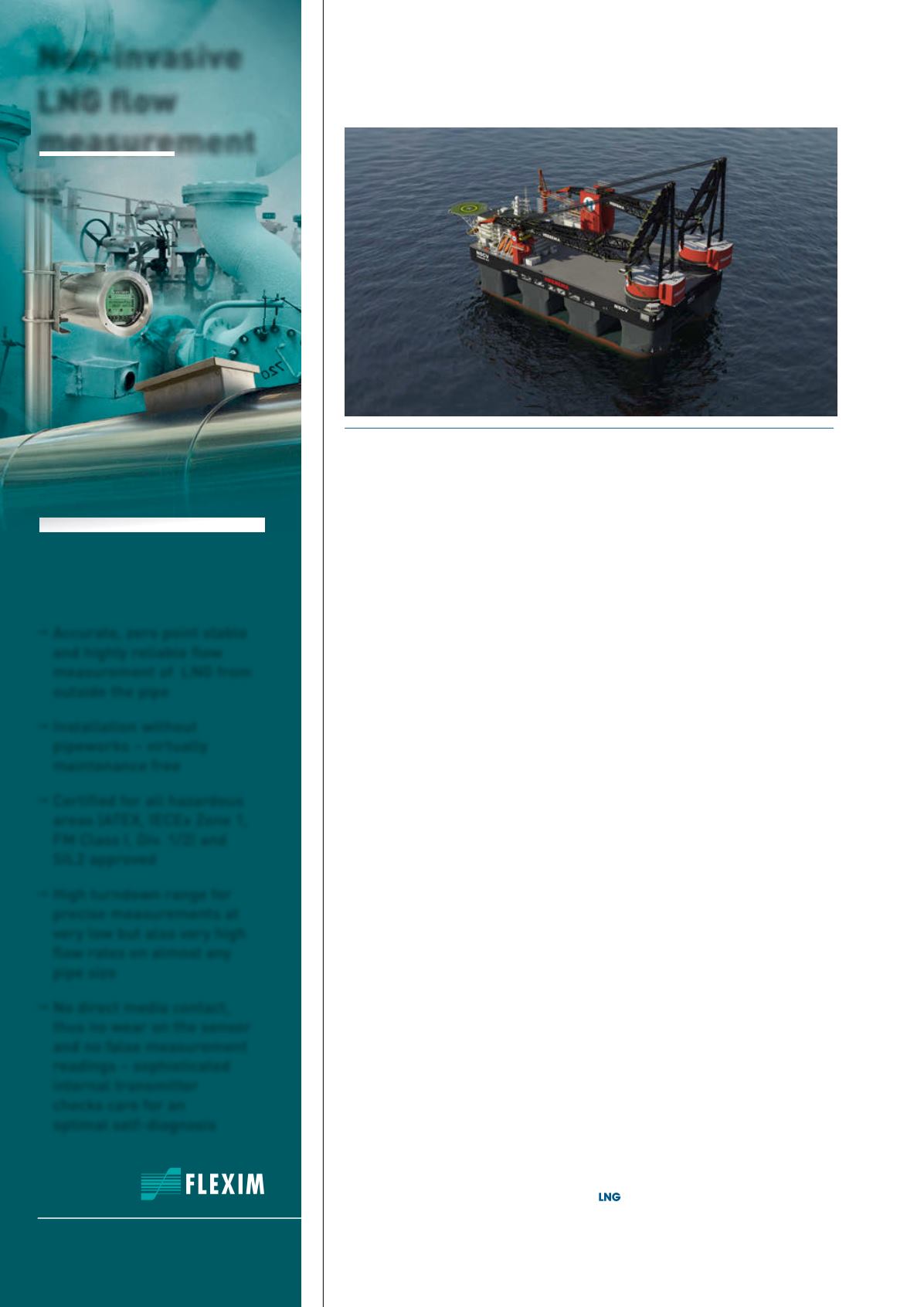
Figure 6.
Heerema’s new semi-submersible crane vessel (NSCV).
Non-invasive
LNG flow
measurement
info flexim.com
Accurate, zero point stable
and highly reliable flow
measurement of LNG from
outside the pipe
Installation without
pipeworks – virtually
maintenance free
Certified for all hazardous
areas (ATEX, IECEx Zone 1,
FM Class I, Div. 1/2) and
SIL2 approved
High turndown range for
precise measurements at
very low but also very high
flow rates on almost any
pipe size
No direct media contact,
thus no wear on the sensor
and no false measurement
readings – sophisticated
internal transmitter
checks care for an
optimal self-diagnosis
No pipeworks - highly
reliable - accurate –
maintenance free
Where the holding time is a strong technical requirement, the vacuum Type C
tank is used. In addition to this, vacuum Type C tanks have a size limitation of up
to 1000 m
3
and can only be cylindrical.
In this regard, it is worth mentioning the latest project between Sembcorp
Marine and Heerema Offshore Services B.V. to build a new semi-submersible
crane vessel (NSCV). In this offshore unit, TGE will install a fuel gas system, which
will feed 12 MAN 8L51/60 DF engines. The LNG will be stored in a set of eight
tanks, with a total volume of approximately 10 000 m
3
of LNG. In this vessel, the
tanks will be foam-insulated. The holding capacity is long enough to allow high
flexibility to the NSCV to sail without struggling with BOG (which is controlled by
a series of BOG compressors).
The fuel gas system will be tailor-made, based on the various requirements
given by the complexity of the offshore vessel and by the space constraints that
are dictated by the variety and quantity of additional auxiliary systems to be
installed for normal operations. The demanding environmental conditions for the
fuel gas system installations are typically the case for all vessels, leading to
challenges that can be easily underestimated during the project planning.
What are the challenges for fuel gas
system integration?
Integration and cooperation between fuel gas system suppliers and shipyards is
generally key to the successful installation of the fuel gas system. The common
requirement from ship owners is to optimise the space of the fuel gas system for
the ship’s cargo (maximising the cargo and the profitability of the vessel). The
already-difficult integration of cryogenic equipment is then combined with narrow
locations, where cryogenic valves, piping and storage tanks have to be installed.
These limitations often do not easily match with the class requirements on safety
in ex-zones. Dedicated studies have to be carried out on a case-by-case basis.
Standardisation is under development, but the variety of vessels in which the fuel
gas system has to be installed and the stringent requirements on loss of cargo
space generally lead to tailored solutions.
Conclusion
The adoption of fuel gas systems is an emerging strategy, particularly due to the
active LNG market foreseen in the near future, with quantifiable benefits in terms
of reduced consumption, emission profiles and, more broadly, public conscience.
Still, it is important to be aware of the challenges that fuel gas systems with
cryogenic equipment bring into non-gas carrier vessels. Both during the building
and operation of the ship, engineers and crews must learn the handling and
safety standards when working with LNG.


